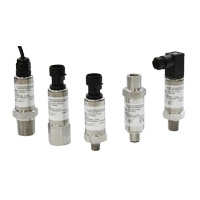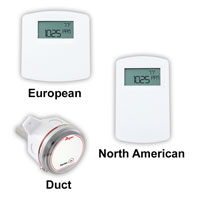
Have you ever wondered why there are a multitude of sensor output signals that can be configured on pressure, temperature, humidity, or gas sensing instrumentation used in process or HVAC applications? Most of these offerings were originally set up to allow sensor manufacturers to better align with the inputs offered by manufacturers of programmable logic controllers (PLCs) and direct digital controllers (DDCs), which are used for controlling processes for both automation and HVAC control.
I’d like to focus on two of the most commonly used output signals and zero in on the advantages and/ or disadvantages these output signals offer. Two of the most commonly used output signals include analog current, typically 4 to 20mA, and analog voltage, typically 0-10V. Continue reading “Understanding Sensor Output Signals”





 The Internet of Things (IoT) is the concept of creating a large network of devices that all interact with each other to ultimately change the way we live and work. By connecting our phones, cars, and other devices to this network and linking them together with shared data/services, we have the potential to revolutionize the way we do everyday tasks. This innovation is at the root of ideas like autonomous vehicles and smart cities that improve efficiency and simplify complicated systems. From an industrial standpoint, the IoT can be applied anywhere from the factory to agricultural fields and offers the opportunity to place all the steps in a process onto an automated course held together by the overarching Internet.
The Internet of Things (IoT) is the concept of creating a large network of devices that all interact with each other to ultimately change the way we live and work. By connecting our phones, cars, and other devices to this network and linking them together with shared data/services, we have the potential to revolutionize the way we do everyday tasks. This innovation is at the root of ideas like autonomous vehicles and smart cities that improve efficiency and simplify complicated systems. From an industrial standpoint, the IoT can be applied anywhere from the factory to agricultural fields and offers the opportunity to place all the steps in a process onto an automated course held together by the overarching Internet.